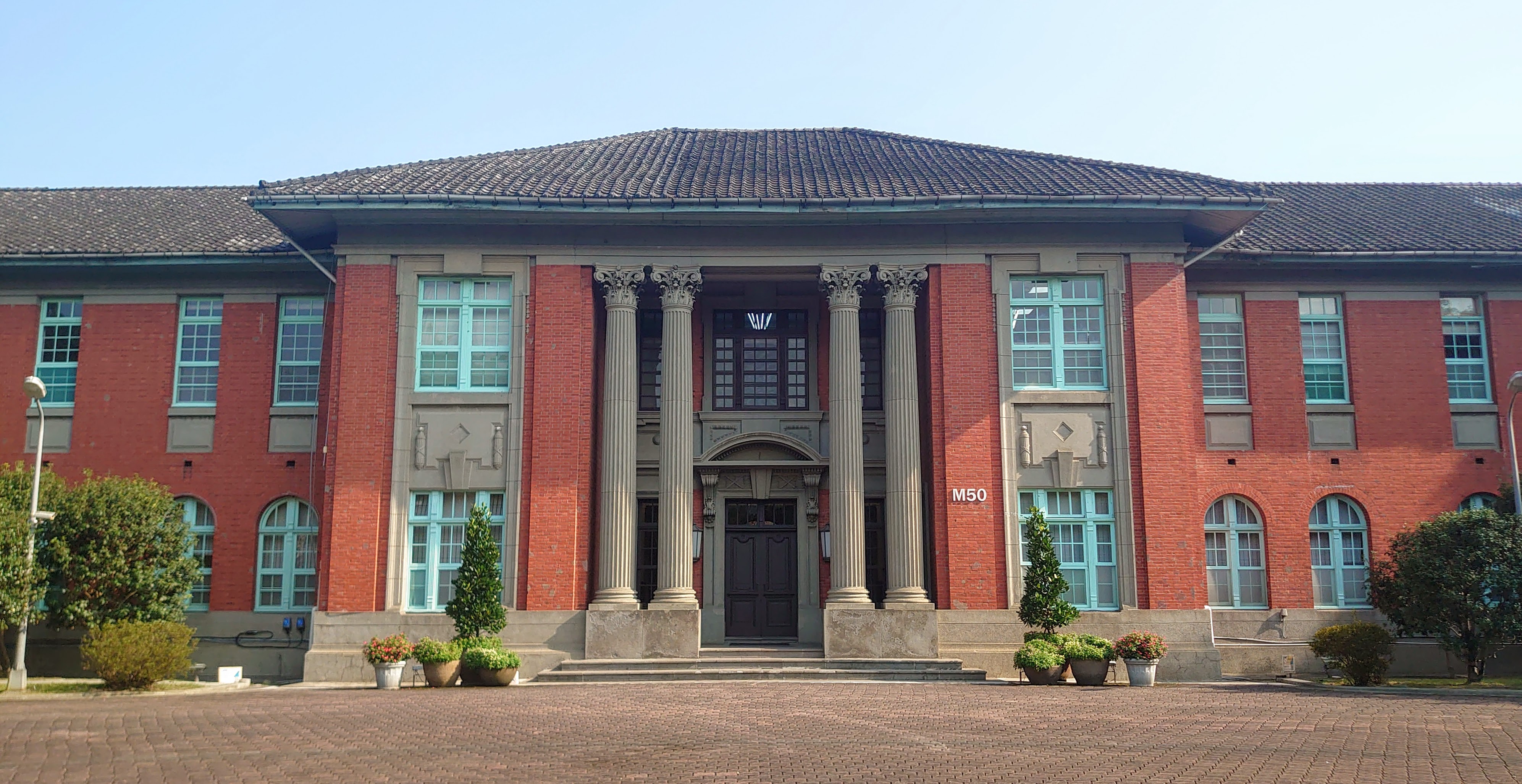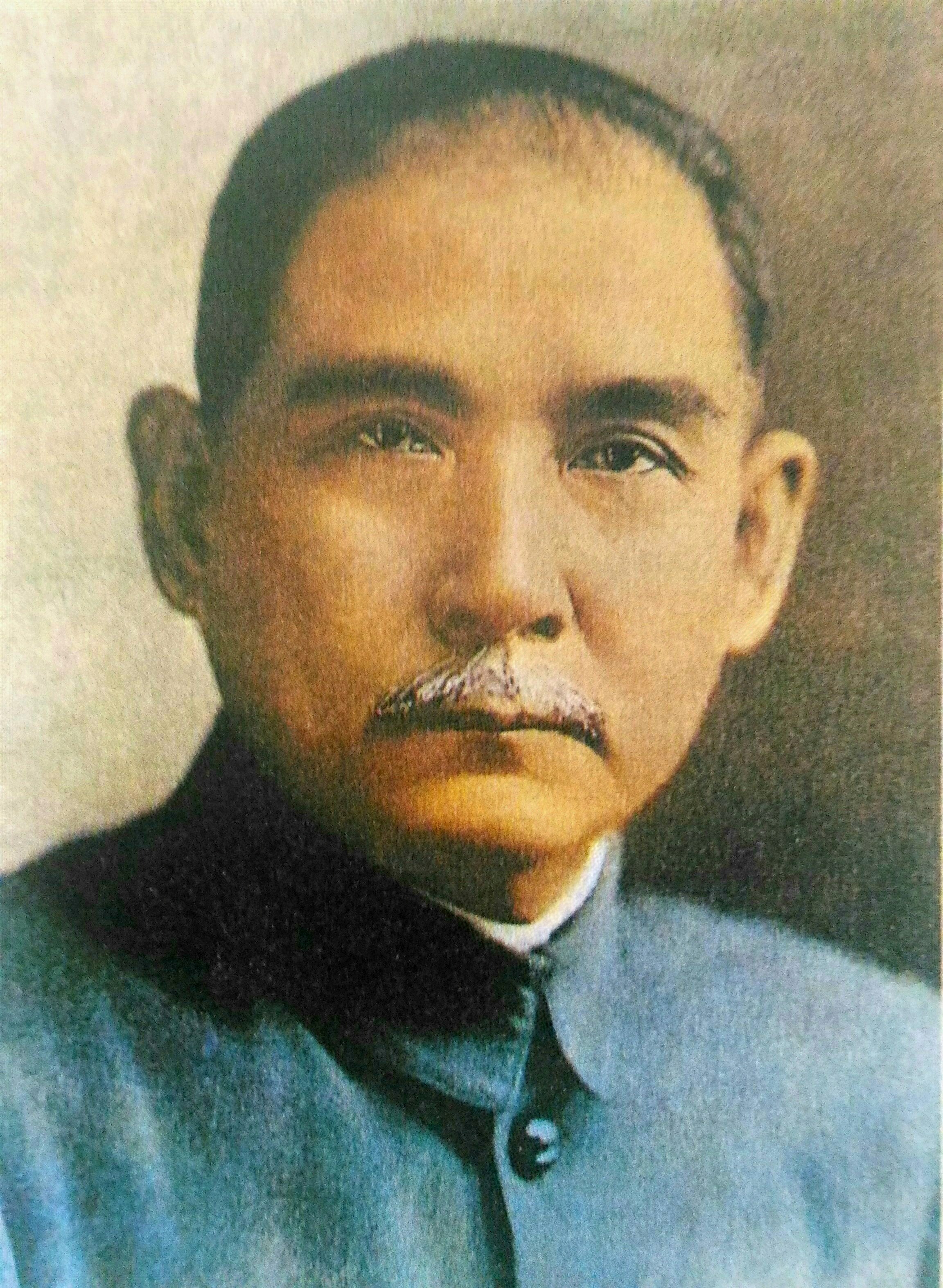|
Chen Yung-fa
Chen Yung-fa (; born 1 September 1944) is a Chinese historian from Taiwan. Chen was born in Chengdu, Sichuan province. He moved with his family to Taiwan in 1949. After Chen earned bachelor's and master's degrees from National Taiwan University, he completed a doctorate in history at Stanford University, and became a professor at National Taiwan University. He was elected to the Academia Sinica in 2004 and served as the director of the academy's between 2002 and 2009. He has been sought for commentary regarding the history of the Republic of China. Beginning in 2011, Chen led a project to digitalize the diarial writings of Tan Yankai. Selected publications * * * References 1944 births Living people 20th-century Chinese historians Historians of China Stanford University alumni Academic staff of the National Taiwan University Members of Academia Sinica 21st-century Chinese historians National Taiwan University alumni 20th-century Taiwanese historians 21st-century Taiwanese h ... [...More Info...] [...Related Items...] OR: [Wikipedia] [Google] [Baidu] |
National Taiwan University
National Taiwan University (NTU; ) is a public research university in Taipei, Taiwan. The university was founded in 1928 during Japanese rule as the seventh of the Imperial Universities. It was named Taihoku Imperial University and served during the period of Japanese colonization. After World War II, the Nationalist Kuomintang (KMT) government assumed the administration of the university. The Ministry of Education reorganized and renamed the university to its current name on November 15, 1945, with its roots of liberal tradition from Peking University in Beijing by former NTU President Fu Ssu-nien. The university consists of 11 colleges, 56 departments, 133 graduate institutes, about 60 research centers, and a school of professional education and continuing studies. Notable alumni include Tsai Ing-Wen, current President of the Republic of China, former presidents Lee Teng-hui, Chen Shui-bian and Ma Ying-jeou, Turing Award laureate Andrew Yao, and Nobel Prize in Chemistry ... [...More Info...] [...Related Items...] OR: [Wikipedia] [Google] [Baidu] |
Stanford University
Stanford University, officially Leland Stanford Junior University, is a private research university in Stanford, California. The campus occupies , among the largest in the United States, and enrolls over 17,000 students. Stanford is considered among the most prestigious universities in the world. Stanford was founded in 1885 by Leland and Jane Stanford in memory of their only child, Leland Stanford Jr., who had died of typhoid fever at age 15 the previous year. Leland Stanford was a U.S. senator and former governor of California who made his fortune as a railroad tycoon. The school admitted its first students on October 1, 1891, as a coeducational and non-denominational institution. Stanford University struggled financially after the death of Leland Stanford in 1893 and again after much of the campus was damaged by the 1906 San Francisco earthquake. Following World War II, provost of Stanford Frederick Terman inspired and supported faculty and graduates' entrepreneu ... [...More Info...] [...Related Items...] OR: [Wikipedia] [Google] [Baidu] |
Academia Sinica
Academia Sinica (AS, la, 1=Academia Sinica, 3=Chinese Academy; ), headquartered in Nangang, Taipei, is the national academy of Taiwan. Founded in Nanking, the academy supports research activities in a wide variety of disciplines, ranging from mathematical and physical sciences to life sciences, and to humanities and social sciences. As an educational institute, it provides PhD training and scholarship through its English-language Taiwan International Graduate Program in biology, agriculture, chemistry, physics, informatics, and earth and environmental sciences. Academia Sinica is ranked 144th in Nature Publishing Index - 2014 Global Top 200 and 18th in Reuters World's Most Innovative Research Institutions of 2019. The current president since 2016 is James C. Liao, an expert in metabolic engineering, systems biology and synthetic biology. History Academia Sinica, which means "Chinese Academy", was founded in 1928 in Nanking, then capital of the Republic of China, wit ... [...More Info...] [...Related Items...] OR: [Wikipedia] [Google] [Baidu] |
History Of The Republic Of China
The history of the Republic of China begins after the Qing dynasty in 1912, when the Xinhai Revolution and the formation of the Republic of China put an end to 2,000 years of imperial rule. The Republic experienced many trials and tribulations after its founding which included being dominated by elements as disparate as warlord generals and foreign powers. In 1928, the Republic was nominally unified under the Kuomintang (KMT; also called "Chinese Nationalist Party") after the Northern Expedition, and was in the early stages of industrialization and modernization when it was caught in the conflicts involving the Kuomintang government, the Chinese Communist Party (CCP), local warlords, and the Empire of Japan. Most nation-building efforts were stopped during the full-scale Second Sino-Japanese War against Japan from 1937 to 1945, and later the widening gap between the Kuomintang and the Communist Party made a coalition government impossible, causing the resumption of the Chinese Ci ... [...More Info...] [...Related Items...] OR: [Wikipedia] [Google] [Baidu] |
Tan Yankai
Tan Yankai (; ; January 25, 1880 – September 22, 1930) was a Chinese politician. Biography Tan Yankai was born on 25 January 1880 in Hangzhou during the waning decades of the Qing dynasty. He was the son of the Qing minister Tan Zhonglin. A member of Liang Qichao's Constitutionalist Party, he campaigned for a parliament and restrained monarchy. As the party renamed itself the Progressive Party after the Xinhai Revolution, he was a major leader. He left and joined the Kuomintang and became military governor of his home province. He remained neutral during Sun Yatsen's attempt to overthrow President Yuan Shikai in the 1913 Second Revolution, but Yuan removed him anyway. He returned to power after Yuan's death and led his province into resisting the Beiyang Army in 1917's Constitutional Protection War, which saved Sun's Guangdong base. After a brief attempt at spearheading federalism, his subordinates forced him to resign. When Chen Jiongming was driven out of Guangzhou, Ta ... [...More Info...] [...Related Items...] OR: [Wikipedia] [Google] [Baidu] |
1944 Births
Events Below, the events of World War II have the "WWII" prefix. January * January 2 – WWII: ** Free France, Free French General Jean de Lattre de Tassigny is appointed to command First Army (France), French Army B, part of the Sixth United States Army Group in North Africa. ** Landing at Saidor: 13,000 US and Australian troops land on Papua New Guinea, in an attempt to cut off a Japanese retreat. * January 8 – WWII: Philippine Commonwealth troops enter the province of Ilocos Sur in northern Luzon and attack Japanese forces. * January 11 ** President of the United States Franklin D. Roosevelt proposes a Second Bill of Rights for social and economic security, in his State of the Union address. ** The Nazi German administration expands Kraków-Płaszów concentration camp into the larger standalone ''Konzentrationslager Plaszow bei Krakau'' in occupied Poland. * January 12 – WWII: Winston Churchill and Charles de Gaulle begin a 2-day conference in Marrakech ... [...More Info...] [...Related Items...] OR: [Wikipedia] [Google] [Baidu] |
Living People
Related categories * :Year of birth missing (living people) / :Year of birth unknown * :Date of birth missing (living people) / :Date of birth unknown * :Place of birth missing (living people) / :Place of birth unknown * :Year of death missing / :Year of death unknown * :Date of death missing / :Date of death unknown * :Place of death missing / :Place of death unknown * :Missing middle or first names See also * :Dead people * :Template:L, which generates this category or death years, and birth year and sort keys. : {{DEFAULTSORT:Living people 21st-century people People by status ... [...More Info...] [...Related Items...] OR: [Wikipedia] [Google] [Baidu] |
Historians Of China
A historian is a person who studies and writes about the past and is regarded as an authority on it. Historians are concerned with the continuous, methodical narrative and research of past events as relating to the human race; as well as the study of all history in time. Some historians are recognized by publications or training and experience.Herman, A. M. (1998). Occupational outlook handbook: 1998–99 edition. Indianapolis: JIST Works. Page 525. "Historian" became a professional occupation in the late nineteenth century as research universities were emerging in Germany and elsewhere. Objectivity During the ''Irving v Penguin Books and Lipstadt'' trial, people became aware that the court needed to identify what was an "objective historian" in the same vein as the reasonable person, and reminiscent of the standard traditionally used in English law of "the man on the Clapham omnibus". This was necessary so that there would be a legal benchmark to compare and contrast the scholar ... [...More Info...] [...Related Items...] OR: [Wikipedia] [Google] [Baidu] |
Stanford University Alumni
Stanford University, officially Leland Stanford Junior University, is a private research university in Stanford, California. The campus occupies , among the largest in the United States, and enrolls over 17,000 students. Stanford is considered among the most prestigious universities in the world. Stanford was founded in 1885 by Leland and Jane Stanford in memory of their only child, Leland Stanford Jr., who had died of typhoid fever at age 15 the previous year. Leland Stanford was a U.S. senator and former governor of California who made his fortune as a railroad tycoon. The school admitted its first students on October 1, 1891, as a coeducational and non-denominational institution. Stanford University struggled financially after the death of Leland Stanford in 1893 and again after much of the campus was damaged by the 1906 San Francisco earthquake. Following World War II, provost of Stanford Frederick Terman inspired and supported faculty and graduates' entrepreneuriali ... [...More Info...] [...Related Items...] OR: [Wikipedia] [Google] [Baidu] |
Academic Staff Of The National Taiwan University
An academy (Attic Greek: Ἀκαδήμεια; Koine Greek Ἀκαδημία) is an institution of secondary or tertiary higher learning (and generally also research or honorary membership). The name traces back to Plato's school of philosophy, founded approximately 385 BC at Akademia, a sanctuary of Athena, the goddess of wisdom and skill, north of Athens, Greece. Etymology The word comes from the ''Academy'' in ancient Greece, which derives from the Athenian hero, ''Akademos''. Outside the city walls of Athens, the gymnasium was made famous by Plato as a center of learning. The sacred space, dedicated to the goddess of wisdom, Athena, had formerly been an olive grove, hence the expression "the groves of Academe". In these gardens, the philosopher Plato conversed with followers. Plato developed his sessions into a method of teaching philosophy and in 387 BC, established what is known today as the Old Academy. By extension, ''academia'' has come to mean the accumulation, de ... [...More Info...] [...Related Items...] OR: [Wikipedia] [Google] [Baidu] |
Members Of Academia Sinica
Member may refer to: * Military jury, referred to as "Members" in military jargon * Element (mathematics), an object that belongs to a mathematical set * In object-oriented programming, a member of a class ** Field (computer science), entries in a database ** Member variable, a variable that is associated with a specific object * Limb (anatomy), an appendage of the human or animal body ** Euphemism for penis * Structural component of a truss, connected by nodes * User (computing), a person making use of a computing service, especially on the Internet * Member (geology), a component of a geological formation * Member of parliament * The Members, a British punk rock band * Meronymy, a semantic relationship in linguistics * Church membership, belonging to a local Christian congregation, a Christian denomination and the universal Church * Member, a participant in a club or learned society A learned society (; also learned academy, scholarly society, or academic association) is an ... [...More Info...] [...Related Items...] OR: [Wikipedia] [Google] [Baidu] |






